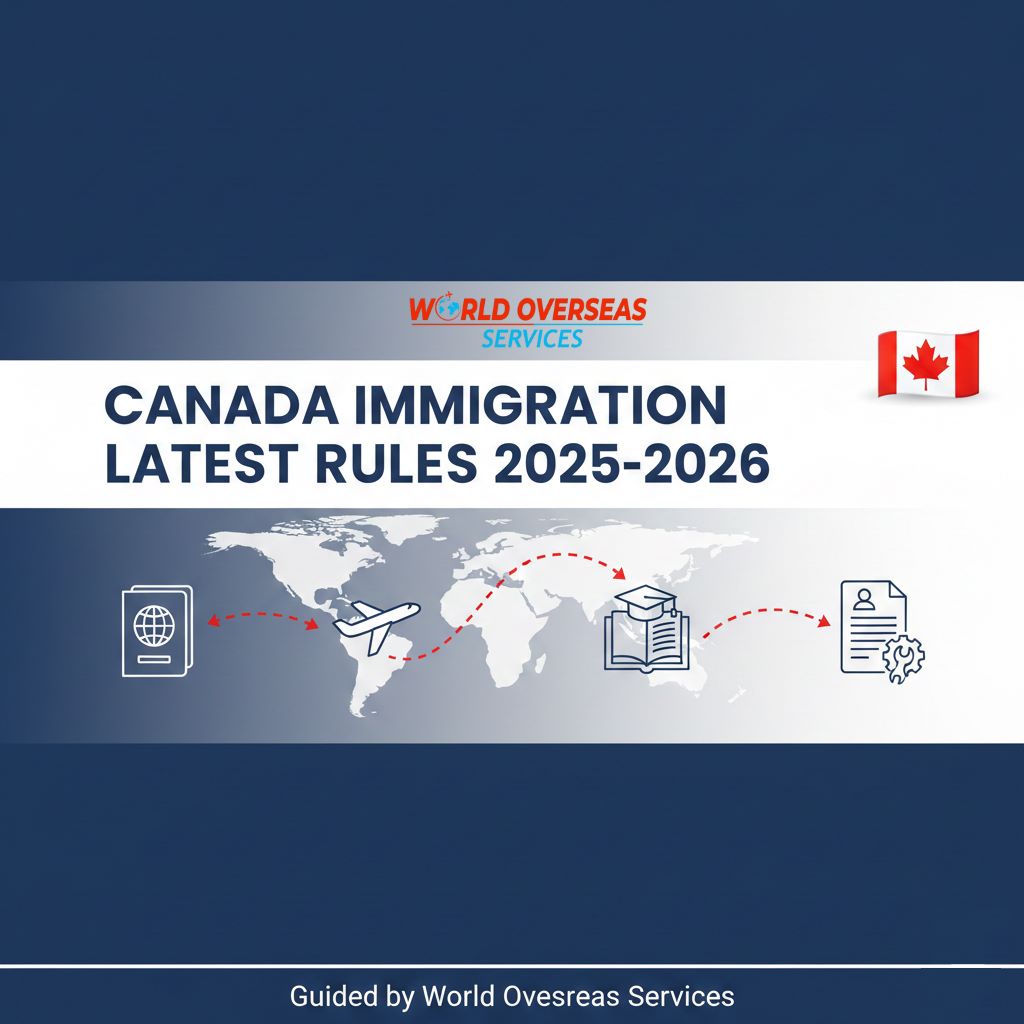Canada is reshaping its immigration policies between 2026 and 2028 to prioritize skilled workers, temporary residents already in the country, and international students aligned with labour market needs. These updates impact the Temporary Foreign Worker Program (TFWP), study permit policies, Post-Graduation Work Permits (PGWP), and sector-specific Permanent Residency (PR) pathways.
World Overseas Services breaks down the changes to help applicants make informed decisions.
1. Accelerated Pathway from Temporary Resident to Permanent Resident
The Canadian government plans to accelerate the PR transition for up to 33,000 temporary workers in 2026 and 2027.
Key Highlights:
- Prioritizes temporary workers already in Canada, contributing to the economy, and paying taxes
- Targets high-demand sectors such as healthcare, IT, engineering, and skilled trades
- Builds on previous initiatives where Canadian work experience significantly boosted PR eligibility
2. Tightened Temporary Foreign Worker Program (TFWP)
Canada is making the TFWP more selective and sector-focused.
Changes include:
- LMIA processing paused in regions with unemployment rates over 6%
- TFWP intake reduced from 82,000 to 60,000 in 2026
- Focus on strategic sectors and regions with verified labour shortages
3. New Sector-Specific PR Pathways and Work Permit Streams
Canada is introducing several sector-specific programs:
| Program | Target Group |
|---|---|
| Accelerated PR Pathway for H-1B Holders | Tech, healthcare, research, AI, advanced industries |
| PR Pathway for Construction Workers | Up to 6,000 undocumented workers already in Canada |
| Agriculture & Fish Processing Stream | Sector-specific work permits leading to PR |
| Home Care Worker Pilots | Reopening for 2026 intake |
4. Changes Affecting International Students
Canada is aligning study permits with workforce needs to ensure students are contributing to the economy post-graduation.
Key Changes:
- Graduate Student Priority: Master’s and PhD students no longer need PAL/TAL, with expedited application processing including family members
- PGWP Realignment: 178 programs will be removed from PGWP eligibility in early 2026. Students should select programs aligned with labour market demand (healthcare, IT, engineering, agriculture, and trades)
- Work-to-PR Pathways: Students gaining Canadian work experience after graduation will have stronger chances for PR under Express Entry or Provincial Nominee Programs
5. Benefits for Skilled and Experienced Workers
These immigration changes favour candidates who:
- Already work in Canada with valid work permits
- Possess Canadian work experience in high-demand sectors
- Choose study programs that align with future employment opportunities
Frequently Asked Questions (FAQ)
1. Will it be easier to get PR with Canadian work experience?
Yes. Canada prioritizes temporary workers with Canadian experience, especially in high-demand sectors.
2. Can work permits still be issued from outside Canada?
Yes, but applications focus on priority occupations and regions with labour shortages.
3. Are all study programs losing PGWP eligibility?
No. Only 178 programs are affected. Verify eligibility before enrollment.
4. Do graduate students need PAL/TAL?
No. Master’s and PhD applicants are exempt starting 2026.
5. What pathways exist for international students to gain PR?
Express Entry, sector-specific streams, and Provincial Nominee Programs are main routes.
Canada’s immigration system is evolving toward permanent, skilled, and sector-focused immigration. While competition is increasing, opportunities for temporary workers, skilled professionals, and international students remain strong—especially for those with Canadian experience or sector-aligned education.
World Overseas Services can help applicants navigate these changes, assess eligibility, and choose the best pathway to work, study, and PR in Canada.
